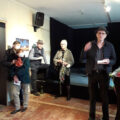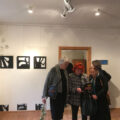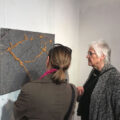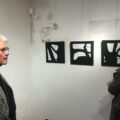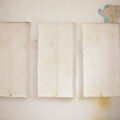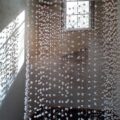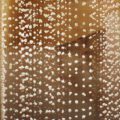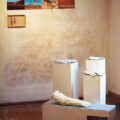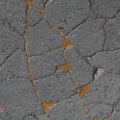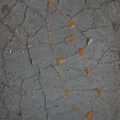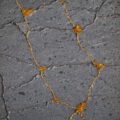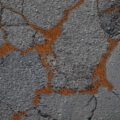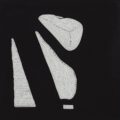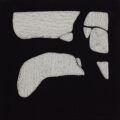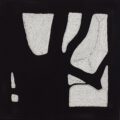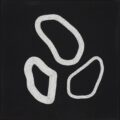Exhibitions
STILLSTAND UND WANDEL
24.4.-22.5. 2022
Landarbeiterhaus Kleinmachnow
Ute Wennrich - Installation and Object
with Ralf Klingelhöfer - Photos
...Distressingly quiet cityscapes and sensitive, silent interventions in the reality of nature and the city, which even access our enchanted place. Ute Wennrich comes from Augsburg, studied in Berlin and, after a first life as an architect, has been leading a second one as a visual artist since 1989. Her presentation focuses on nature and its local references. With the materials she uses for her objects she refers to the life cycle of the tree as an important part of ecology and thus for us humans. She walked along the silent path to the forest behind the Agricultural Workers’ House where the giant oaks are to be found (which you, yourselves should do again and again as well).
To these scarred massive hardwood giants, she dedicated a wonderfully light artistic homage, named after Aeolos, the god of the winds, who sweeps through the branches and the sprouting leaves each spring – just as he does presently –, welcoming the fresh foliage and bidding it farewell in late autumn when it dies. Playfully arranged rounds of feather-light paper balls on strings hint the mighty and heavy half-a-millennium-old trunk. Redoubled by their shadows in the sunlight they begin to dance in a gentle draught when Aeolos sends a breath through the open door.
Stagnation and Change: The cracked asphalt in front of the Steglitz front door, indifferently constructed by heavy machinery and carelessly worn down by hurrying contemporaries. Ute Wennrich makes this pitted structure emerge from the anonymity of the big city and turns it into something precious in a very creative and special way. Shiny golden pearl plants sprout up from the cracks overcoming the literal flatness, the grey barrenness, and the illusion of technological feasibility and at the same time alluding to a greater, alltoo gladly forgotten truth.
In the end, hard matters are subject to soft matters, all living things and the natural flow of life. It’s a quiet yet provocative self-assertion of individuality, human in general, artistic in particular. It shows solidarity with the silent self-assertion of nature, which is flouted for the sake of profit by an arrogant civilisation using sophisticated technology to exploit natural resources to an increasing degree. All too easily, we forget that we originate from nature and are part of it.
Ute Wennrich concludes her statement with a quote from Antonio Tàpies that I would like to quote again, and which applies to both exhibitors: “I cannot imagine any artist who does not completely live in adventure and in constant transition, always ready to leap into the void. In an era in which interventions of all kinds are the order of the day, it turns out that for art, authentic life only takes place outside the world of functionaries.”
Rainer Ehrt

